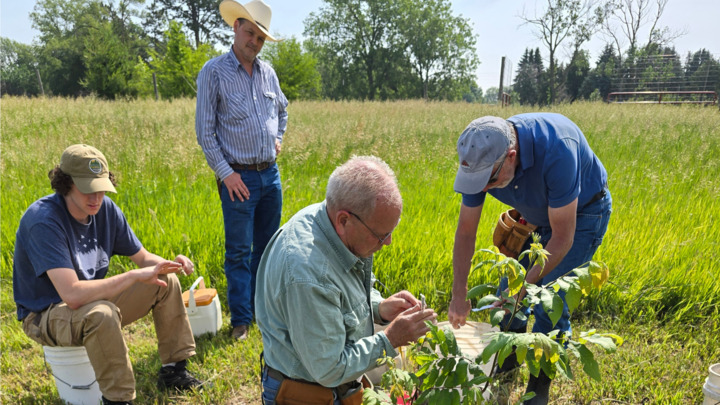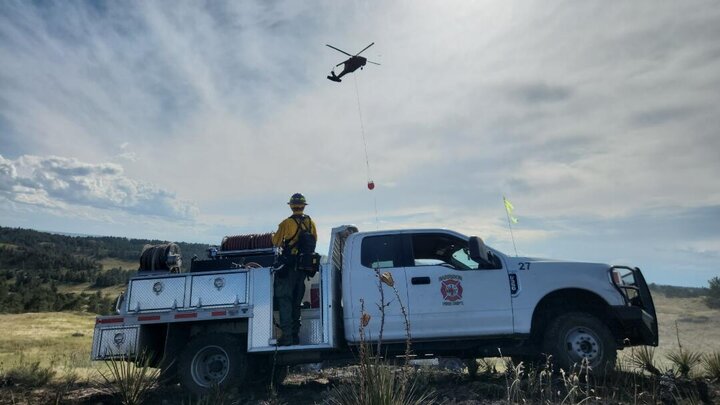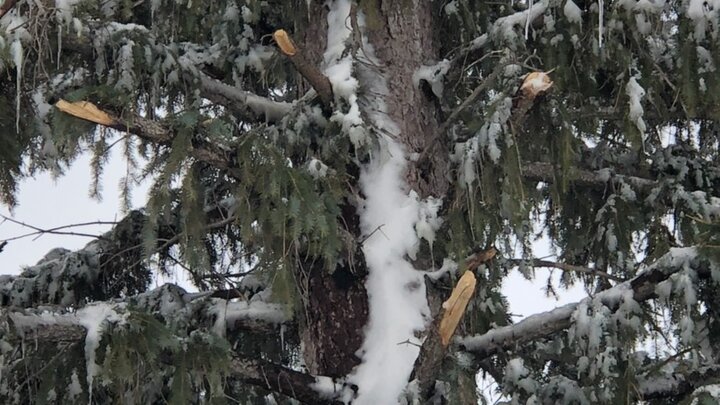South of Plattsmouth, Nebraska, a quiet revolution in nut tree cultivation is growing at the Horning State Farm Demonstration Forest. Managed by the Nebraska Forest Service (NFS), the site has become a hands-on classroom, research plot, and gathering place for nut tree enthusiasts—thanks to a collaborative grafting program that’s producing both promising trees and valuable experience.
The effort began around 2021, when then-property manager Aaron Clare reached out to the Nebraska Nut Growers Association (NNGA). “Aaron saw an opportunity not only to graft nut trees but also to learn from the Nut Growers themselves,” said Andrew Zahn, current property manager at Horning. Since then, annual grafting days have brought together students, landowners, and veteran growers.
The program builds on earlier work by horticulturist Troy Pabst, a longtime NNGA member who had attempted grafting in some of the same areas years before. With pecan and hickory rootstock planted in 2007 and again in 2018, Horning offered a strong base to test scion varieties and track results.
“Since 2022, we’ve grafted close to 100 trees,” Zahn said. “We’re actually starting to run out of trees to graft onto, which is a good problem to have.” Success rates vary—averaging around 40%—but in the first year, despite cold and damp conditions, they hit as high as 80%.
Some grafts have already produced catkins, signaling the potential for future nut crops. Still, Zahn noted, “The farm likely won’t see a true harvest for another 10 to 15 years. But it’s promising. You walk through the plots and see the grafts that not only took but are thriving.”
For students, the project is a practical and memorable learning experience. “It was their first time doing it hands-on, and they really enjoyed it,” Zahn said. Cole Brady said it gave him “a sense of pride,” and fellow technician Grady Bischof appreciated the “better understanding of tree biology and tree crop production.” Claire Zurowick valued learning directly from experienced growers: “Each individual’s different style of grafting and their personal tips and tricks made this a great learning experience—and a bunch of fun.”
While grafting for nut production can seem counterintuitive—“cutting the top off a perfectly good tree,” as Zahn put it—it reflects a long-term vision. These trees aren’t grown for timber; their value lies in future harvests of high-quality nuts, each tied to a specific, trackable cultivar. “It might seem strange,” Zahn said, “but if you care about the quality of the nuts you grow, it makes perfect sense.”
Horning State Farm continues to serve as a unique crossroads: part field lab, part classroom, and part proving ground for generations of grafts to come. And as those trees grow, so too does the collective knowledge of Nebraska’s next wave of nut growers.




